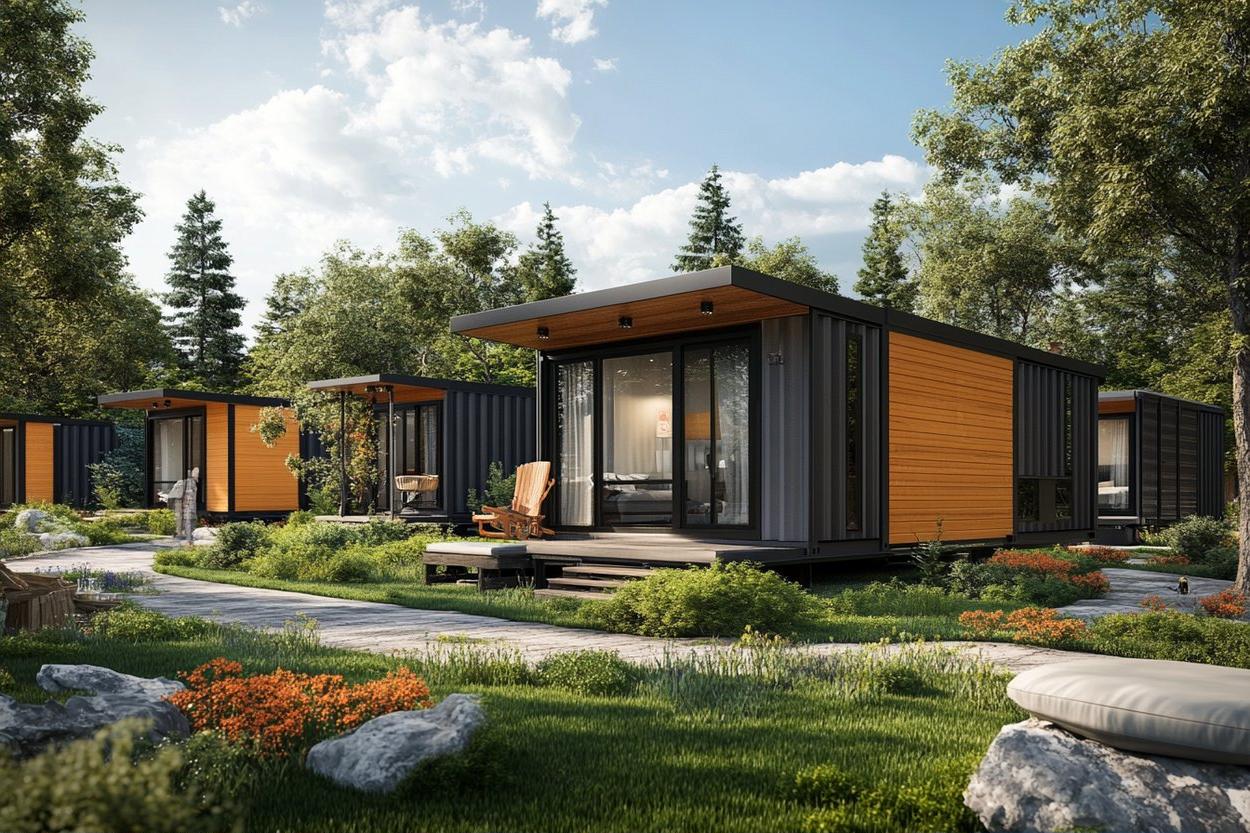Learn how tiny house pods contribute to modern flexible homes
The tiny house movement has evolved beyond just downsized traditional homes to include innovative pod structures that offer unprecedented flexibility in living arrangements. Tiny house pods represent a versatile solution for homeowners seeking to maximize their property's potential without committing to permanent structural changes. These compact, often prefabricated units can be positioned virtually anywhere on a property, serving multiple functions from guest accommodations to work-from-home spaces. As housing needs continue to evolve, particularly with changing work patterns and multigenerational living arrangements, tiny house pods are emerging as practical alternatives that combine minimalist design with functional versatility.

Introduction to Tiny House Pods: A Flexible Living Solution
Tiny house pods represent a modern approach to flexible living that addresses many contemporary housing challenges. Unlike traditional tiny homes on wheels, pods are typically standalone, compact structures designed for specific purposes while maintaining a small footprint. These structures generally range from 100 to 400 square feet and are characterized by their efficient use of space, innovative storage solutions, and multifunctional features. Many pods are prefabricated off-site and delivered ready to use, reducing construction time and disruption.
What makes tiny house pods particularly appealing is their adaptability. They can be quickly installed without extensive foundation work in many cases, and some designs allow for relatively easy relocation if needed. This flexibility makes them suitable for changing family circumstances or evolving property uses. Additionally, many modern pod designs emphasize sustainability through energy-efficient features, eco-friendly materials, and minimal environmental impact during both construction and operation.
Designs That Transform Spaces: Guest Houses, Studios and Cabins
Tiny house pods come in various designs that serve different purposes, transforming otherwise unused yard space into functional areas. Guest houses represent one of the most popular applications, providing comfortable, private accommodations for visitors without the need to renovate the main home. These guest pods typically include basic amenities like sleeping areas, compact bathrooms, and sometimes kitchenettes, offering independence for both hosts and guests.
Studio pods have gained significant traction among creative professionals who need dedicated work spaces separate from their living areas. Whether for artists, musicians, writers, or remote workers, these purpose-built spaces provide the necessary isolation for concentration while eliminating commutes. Similarly, backyard office pods have surged in popularity since the pandemic-driven shift toward remote work, offering professional environments just steps from the main residence.
Recreational cabins represent another popular pod application, with designs that emphasize connection with outdoor spaces through features like large windows, sliding glass doors, and deck areas. These pods can transform ordinary backyards into retreat spaces or serve as vacation cabins on secondary properties, providing comfortable shelter without the expense or maintenance requirements of larger structures.
Innovative Space-Saving Ideas for Tiny Living
The limited square footage of tiny house pods has inspired remarkable creativity in maximizing functionality within minimal space. Multi-purpose furniture forms the cornerstone of tiny pod design, with items like convertible sofas, fold-down tables, and murphy beds enabling spaces to transform based on time-of-day needs. Some designs incorporate raised platform beds with storage underneath or loft sleeping areas to utilize vertical space effectively.
Wall systems in modern pods often feature built-in components that eliminate the need for freestanding furniture. These might include fold-down desks, retractable dining tables, hidden storage compartments, and wall-mounted organizational systems. Kitchen areas frequently employ compact appliances, nested cookware, and multipurpose countertops that serve as both food preparation areas and dining spaces.
Bathroom designs have similarly evolved to maximize functionality in minimal space. Wet rooms that combine shower and toilet areas, tankless water heaters, compact composting toilets, and space-saving fixtures allow for complete bathrooms in surprisingly small footprints. Many manufacturers have developed specialized product lines specifically for tiny spaces, making it easier to outfit these compact environments without sacrificing functionality.
The Appeal of Tiny House Pods in Modern Living
The growing popularity of tiny house pods stems from several contemporary trends and practical considerations. Financial flexibility represents a significant driver, as pods typically cost substantially less than home additions or traditional construction. Homeowners can add functional space without massive investments or increased property taxes in many jurisdictions. Additionally, pods can serve as rental units in areas where regulations permit, potentially generating income through short-term or long-term arrangements.
Environmental consciousness also factors prominently in the appeal of tiny pods. Their smaller footprint means reduced material usage, lower energy requirements for heating and cooling, and minimal site disruption during installation. Many pod manufacturers emphasize sustainable construction methods and materials, appealing to environmentally conscious consumers who want to minimize their housing impact.
Changing family dynamics have further accelerated interest in flexible living solutions. With more adult children returning home, aging parents needing nearby care, and the rise of multigenerational households, pods provide independent living spaces that maintain privacy while keeping family members close. This arrangement allows families to adapt to changing circumstances without relocating or undertaking major renovations.
Embracing the Flexibility of Tiny House Pods
Tiny house pods represent a practical response to evolving housing needs, offering customizable spaces that adapt to changing circumstances. Their modular nature, relatively affordable price point, and quick installation make them accessible options for homeowners seeking additional space without the commitment of permanent construction. As housing challenges continue to evolve, these flexible structures provide innovative solutions for multigenerational families, remote workers, and those simply seeking to maximize their property’s potential.
The tiny house pod movement reflects broader societal shifts toward adaptable, sustainable living arrangements that prioritize functionality over excess space. By reimagining how we utilize property and challenging traditional notions of necessary square footage, these compact structures offer lessons in efficient design that extend beyond their small footprints. Whether serving as temporary solutions or permanent fixtures, tiny house pods demonstrate how thoughtful, purpose-driven design can address contemporary housing challenges while providing comfortable, functional living spaces.




